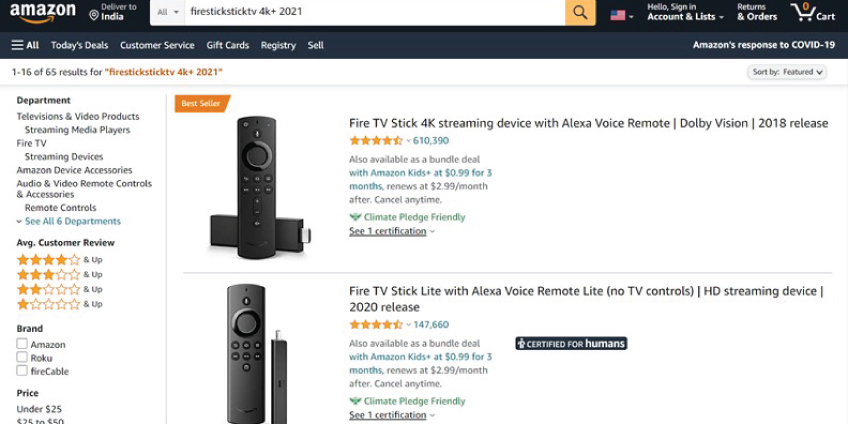
When you pull SEO for eCommerce together, you’ll start seeing the results from keyword searcher to SEO and local SEO on-page. The step-by-step eCommerce SEO Guide deals with every component and seeks to explain, particularly in the current scenario, the need for investment in SEO for eCommerce platforms.
The more people you view your website, the more likely you are to choose your business. Should you not rely on SEO with so much competition? But it can be exhaustive and daunting to work on SEO on your own. It’s an expert’s career. The reading and implementation of tips and tricks are two separate things.
SEO is a continuous phrase. Many SEO experts concentrate on driving traffic to your blog or company website. Search engine optimization For e-commerce businesses too, however, SEO is relevant. You could also be missing sales if you lag in the search results of Google.
In this article, we will be discussing everything that you need to know about SEO eCommerce so that you could make the best out of it and your products rank better.
SEO For eCommerce Websites: Definition
SEO is the search engine optimization process that changes with the change in the recent digital marketing trends. However, the key difference between a normal website and an SEO for eCommerce website is:
- Pages of product and category
- Gateway for Payment
- Navigation header for data protection
Additional aspects are popular, such as a user-friendly GUI, faster load, mobile phone web optimizing, etc. SEO for eCommerce sites includes content, SEOs, SEOs, SEOs, SEOs, and technological SEOs. If you wish your website to be ranked in search engines, an eCommerce marketing strategy is important.
E-commerce SEO enhances the visibility of your online shop on search engine results and generates more organic (free) traffic on your website. In general, the process for e-commerce SEO includes page optimization, technological changes, and refining of the structure of the website.
For e-commerce sites, many procurement networks are available, but SEO for eCommerce sites is vital to long-term success. Fortunately, several strategies can help the company climb the ranks of the search engine. You can best start with your e-commerce SEO strategy by comprehensive, product-focused keyword research and by learning from your competitors.
Importance Of SEO For eCommerce
Regardless of the size, target group, and industry you have, SEO is important for optimizing your income. Search Engine Optimising is essential. The online shopping experience now encompasses search engines such as Google. This can be checked on any site of analysis, like Google Analytics.
Only log in and check your key traffic sources on your chosen site. Opportunities include popular organic searches. Indeed, Google is their number one traffic source for several e-commerce stores. It is plain to see why when you look at the numbers. Google.com is the most visited website in the world, according to the Global Digital Overview. That puts it above.
This sets it apart from many other household names such as YouTube, Facebook, Amazon, and Netflix. Searches in the US are reported to be 40–60 billion per month on Google. Organic quest is an enormous potential audience for e-commerce shops, and much additional revenue is waiting to be drawn through.
More than 40% of revenues in most stores can be ascribed to organic traffic and a quest is responsible for 39% of online transactions. Organic search results are much more appealing to consumers than conventional, paid publicity. Research shows that 62.2% of searches carried out by Google on desktop computers lead to organic clicking and just 2,8% to paid clicking.
These figures on mobile devices are identical, which produce an organic click for about 41% of mobile searches. This is a spectacular rise in paid publicity, which only results in a paid click on 2% of the surveys. By focusing on SEO, you can predict 20 times the number of traffic opportunities on desktop and mobile than Pay-Per-Click (PPC) does.
In other words, the importance of SEO to the success of your online shop cannot be denied. If you neglect SEO, you limit the growth and profit of your company. An e-commerce SEO audit shows the website deficiencies and helps you to find ways to improve and make the website easier to use.
Working Of SEO For eCommerce
Search engines use a mix of bots, indexes, and algorithms to identify the material the top spot deserves. It’s worth looking at the science behind the work of search engines to give your store the best chance to be big. “Crawling” begins with this operation. Here, a team of bots that find new and modified content is sent to search engines.
This may involve a product that a pleased customer has just added or a new review. This will then save your discovered content to an index database. Once your contents are in the index of Google, they will be shown in the search results. Google scans its database for the appropriate content if someone searches.
If the search results show yours as well, then the search results are more likely to include yours. Google arranges the content such that the search problem can be solved efficiently. This is called the ranking method. Your search results are shown in the rankings of your page. The higher each page ranks, the closer the number one position is to be found.
Where your shop appears in search results, the amount of traffic it gets can have a significant effect. If only one point is moved into Google’s results, your click rates (CTRs) will increase by more than 53 percent. This could mean a substantial rise in your visits, conversions, and potentially more income.
Moreover, 95% of web traffic on Google’s first page, with 5% or less of overall traffic on subsequent sites. If you succeed at SEO and achieve the profit-making number one point, your business will receive ten times more likely than a page in the tenth spot to receive a click. This is a worthwhile benefit.
Step-By-Step Guide To SEO For eCommerce (How Do You Better It)
As we’ve seen that SEO is very important for any online business to flourish. We have also gone through the section of SEO for eCommerce. So, now let us see how to do SEO for eCommerce site:
1. Optimal Keyword Research For Perfect eCommerce SEO strategy
You can find terms and phrases that people use when looking for content that is important for your e-commerce shop. Keyword research Your service and goods are included. For any successful SEO strategy, keyword research is essential. All your further optimization efforts will be informed by sentences you define during this process.
There are two keyword fundamental categories:
- Information: These are words used by people to find informative material, such as information on how and tutorials. If there is a blog in your e-commerce shop, these are the words that you are searching for.
- Product: These are words used by people that seek a particular product. These words are at the heart of your keyword strategy for an e-commerce website.
How To Do Keyword Research
Keyword research is fundamental for SEO for eCommerce store. You must search for the most common terms for searching for your items to find the best keywords to use. By using Google’s automated proposals and features, you can find your keywords. There are useful instructions for the most popular keywords. Amazon is equally popular with Google in e-commerce searches.
By looking at Amazon’s keyword tactics, you will learn the latest. Go to Amazon and type the product’s keywords. In each sentence Amazon will make suggestions:

These proposals are an excellent starting point for your SEO strategy since they are likely to be used by your customers. They are also long-term keywords that can be less competitive. These recommendations are also noticeable.
Best Keyword Research Tools Of SEO For eCommerce
Amazon is an excellent starting point, but this isn’t the only place you can study keywords. Several high-quality solutions can benefit you. KWFinder, Ahrefs, and Keyword Explorer are some excellent tools to start with.
The visibility management platform SEMrush also offers solutions for keyword analysis. You may use Ads History to see if the keywords have been used for paid searches before. This will help you measure how much interest you have in keywords.
You can finally estimate how complicated it is to outline the pages currently provided for each keyword by using the keyword difficulties. Where appropriate, you can concentrate on “untapped keywords” when deciding the keywords you like.
These are keywords with the greatest possible return on investment and with a good search volume and low competitiveness (ROI). Depending on the business, exactly what a good search volume is. Be careful, however, of keywords that receive very low searches. It does not matter how well this word converts if someone does not use a specific expression.
Summing Up The Best Keyword Research Tools Of SEO For eCommerce
The best eCommerce platform for SEO are listed below:
- Amazon
- Google Keyword Planner
- Ahrefs
- SEMrush
- Ubersuggest
2. Competitor Research For SEO For eCommerce Site
The e-commerce world is very competitive. But you can learn this from similar companies. This can be a positive thing. A study by competition includes the analysis of the SEO tactics of the rivals. Then you can recognize and reverse engineer the strategies you are using in your shop.
Competition research can be done in various ways, but the analysis of keywords, also known as keyword gap analysis, is one of the most important. Here you use a tool like Moz’s Keyword Explorer to find the words your rivals highly recommend:

You can then analyze the high-performance keywords and identify those that are relevant to your business. You should concentrate on keywords for the best possible results where your rivals are far superior to you.
You will achieve a major SEO boost by improving your eCommerce Search Engine Optimization rankings for these high-performance keywords. This will enhance traffic and transformations. It also enhances the chances of surplus performance and becoming a market leader in your sector. Another method is to classify the contents of competitors who have created numerous backlinks.
Links from websites of third parties will substantially boost your rankings. With a tool such as Link Explorer, you can recognize the most common and often linked content of your competitor. Only join the domain of your competitor and open the Top Pages tab. This report shows all the URLs associated with the domain.
These top-performer URLs then can be entered into a keyword search tool such as Moz’s keywords to see which of the most external links have been attracted. This is valuable information to educate your SEO strategies and to develop content.
3. Simplify Your Site Architecture For SEO For eCommerce
When adding items and categories to your shop, note that the search optimization is made possible by the site design. Particularly, from your homepage to the product categories to the products listed inside you want to be a different hierarchy of navigation. Search engine bots can discover your pages and products on your website, based on a simple and easy-to-follow internal connection structure.
Search engines and tourists are governed by ensuring that people can access anything in three clicks. You can only make up to three clicks from your homepage to access every product on your website.
4. Optimize Product Pages For SEO For eCommerce
You want to concentrate more of your attention on maximizing your products. products are the living element of your company. Many eCommerce store owners only write some lines of text and throw a picture or a video on each product.
Product optimization is important for eCommerce SEO. Here are few methods of doing it precisely:
-
Name of the product To Utilize SEO For eCommerce Product Pages
Categorizing names is a great way of SEO for fashion eCommerce. Your product’s name is significant. In the SEO title and URL of your product page, it is also used in most cases. That’s why you would want to apply to your goods a popular search term or keyword expression.
If you sell T-shirts, for example, make sure you add the name of the product “T-shirt” or “tee.” Thus, the SEO title and the URL both contain the keyword.
As a bonus, this keyword is in the title of a shared post if people share your product on Facebook or Pinterest.
-
Image Optimization
Pictures constitute an integral part of your product listing. Stand for a while in your client’s shoes. Are you more likely to purchase a product from a website that shows clearly the product in as many ways as possible, from a website without an image or from a website that is small and unreadable? Images are important not only for your customers but also for the optimization of search.

Begin with your filename to correctly optimize your search photos. Do not add photos to your product pages called IMG0010.jpg. Use the product name and principal keyword, like east coast-skinny-jeans.jpg instead. Include keywords that people use if you have alternate views of your product.
Include the product name and keyword in the ALT text for the picture when adding the pictures to your product page.
-
Video Optimization
Help you to make your customer more confident by adding a video to your product page. The video may be simple product data (such as commercials), a video on how to use the product to obtain results, or evidence from those that used the product.
It can be a perfect way for potential customers to learn and learn about your goods by publishing video offsites on networks such as YouTube. For example, educational DIY videos will show people how to make something wonderful by adding your items. Once you come to the concept of working on this project, your connected goods are more likely to be bought.
5. Switch To HTTPS For Great SEO For eCommerce
Since your e-commerce site is likely to process payments, you must have a secure connection via Hypertext Transfer Protocol Secure (HTTPS). The HTTPS is a protocol that codes data from your server to the browser of the customer.
Switching to HTTPS will help to safeguard your clients. You should boost your SEO as well. Therefore, checking if your e-commerce store uses HTTPS is a smart idea. If not, we will highlight the move, as it would almost surely have a positive effect on the search engine ranges of your shop (and safeguard the transactions of your customers).
Improve Your Presence Online By Boosting SEO For eCommerce
You can lose out on sales when your goods are not highly classified in the search results of Google. Fortunately, you can go up the rankings and even score the number-one spot if you follow our e-commerce SEO tips. You can get your SEO strategy started by conducting extensive keyword research and learning from your competitors.
To help you improve search engines, you can then customize your product pages with techniques such as breadcrumb and snippets. Finally, with a strong content marketing plan, you can increase key metrics, including the length of the session and the number of pages visited. We hope that we cleared your doubt about how to do SEO for a website.
You can always take the help of one of the best SEO companies for eCommerce. The SEO experts of C-Incognito will help to uplift your SEO for eCommerce.



